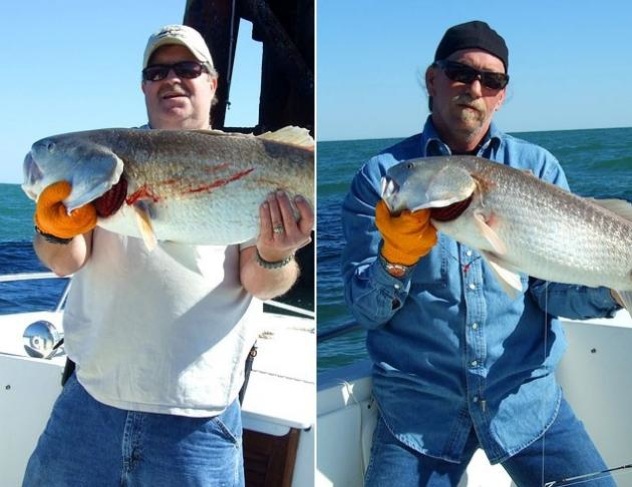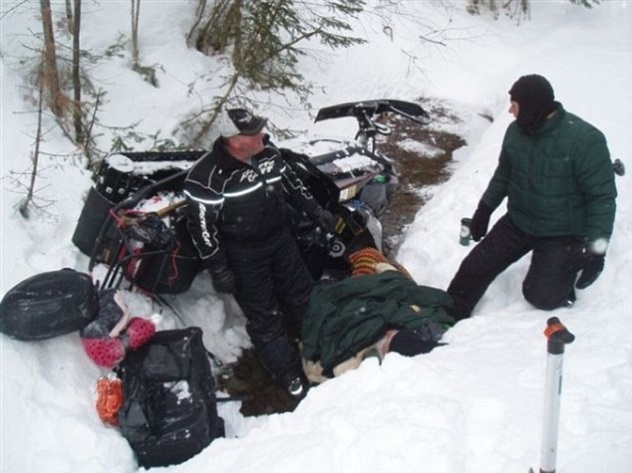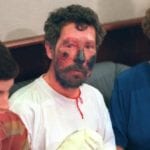As for the following people, they decided that statistics be damned, they weren’t going to be one. These average, everyday people found themselves in situations that are normally only survived by waking up from the nightmare, yet they’re still with us today… and with some pretty harrowing tales to tell.
Survived: Being buried alive Michelina Lewandoska, a Polish emigrant to the U.K., described for a British court in January of 2012 the terror she felt as she lay buried in the ground, her hands and feet bound, in a taped-up cardboard box, slowly suffocating: “During my time inside my shallow grave where I was buried alive I feared that my life was at an end and I was going to die… I prayed to God to help me to survive so that I could look after my young son.” The referred to her then 3 year-old son she shared with fiancé Marcin Kasprzak—the man who had buried her. After having grown “bored” of Michelina, Kasprzak and his younger friend Patryk Borys hatched a plan to get rid of her. Marcin attacked her with a stun gun, once to get her to the ground and once “for a long period”; he and his friend then bound her wrists and ankles and tied her up, apparently trying to figure out what to do next for several hours—before finally stuffing Michelina into a cardboard box and driving off into the wilderness, to bury her alive under four inches of earth and a 90 pound tree branch. Incredibly, Michelina used her engagement ring to cut loose of her bonds as she was buried in the shallow grave, then claw her way out. She had difficulty walking and breathing for weeks after the attack, and doubtless still has nightmares; but on her testimony, her attackers were both sentenced to 20 years in prison.
Survived: Attack by “Railway Killer” (sole survivor) When Holly Dunn and her boyfriend Chris Maier were approached by a strange looking man asking for money late on the night of August 29, 1997, they were a little spooked—and they had every reason to be. The man’s name was Angel Resendiz, and at the time he had already killed six people and would go on to kill many more. Resendiz found the couple chatting by some train tracks a few blocks away from a party they had just come from. Producing an ice pick, he was able to get both Holly and Chris tied up and stashed in a ditch; after repeatedly checking to make sure he had not been seen, he returned to bludgeon Chris to death with a 50 pound rock. Holly was then raped, stabbed in the neck with the ice pick, and beaten so severely she was practically unrecognizable, at which point she mercifully passed out. After awaking to find her attacker gone, Holly dragged herself to the nearest house, and was taken to the hospital with a shattered eye socket and broken jaw among many other injuries. She was able to recover, and testified against Resendiz at the trial that saw him convicted and sentenced to death—a sentence that was carried out in 2006. Angel Resendiz, the “Railway Killer” murdered at least 15 people over 13 years—and Holly Dunn is the only one of his victims to survive.
Survived: 47-story fall from apartment building Alcides Moreno and his brother Edgar were window washers, and they worked together on Manhattan high rise buildings for years. The job obviously carries certain risks, and in December 2007 those risks became horrifying reality as the rig they were working on became disengaged and plummeted 47 stories—almost 500 feet—into an alleyway. Firefighters arrived to find Edgar deceased and his brother Alcides alive, CONSCIOUS—and sitting up. Investigators theorize that Alcides was able to sort of “ride” the platform, using it to help slow his descent, and his doctors noted that he did not hit his head or break his pelvis upon landing—the two things most likely to cause fatal complications in such a fall. Alcides was rushed to the emergency room that day with injuries to his spine and brain, shattered limbs, fractured ribs—in short, everything you would expect to see in someone who just fell 500 feet onto the pavement, except the lack of a pulse. Doctors expected his recovery to take a year or more, but he was pretty much recovered—and making the rounds on morning talk shows—by June. Alcides’ days as a window washer are over, but his days of life should be plentiful, to the astonishment of literally everyone. Moreno’s lead doctor said that falls from three stories and above are very difficult to survive, and that Alcides’ treatment had taken his team into new medical territory: “Above ten stories, most of the time we never see the patients,” he said, “because they usually go to the morgue.”
Survived: Being stranded at sea after boat sank Longtime friends Ken Henderson and Ed Coen were on a fishing trip in the Gulf of Mexico in March 2012 when their 30-foot boat started to fill up with water. Henderson tried to pump some of the water out, but it had taken them too long to notice—salt water sprayed everywhere, killing the pumps. There was no response on their radio, no signal on Henderson’s cell phone—and just after grabbing some life jackets and a few supplies, the boat vanished beneath them into the ice-cold water. And there they remained, for over 30 hours. They talked to keep each other distracted, huddled together to conserve body heat, and fought fatigue, dehydration and the bitter cold for as long as they could. Henderson decided to make a last ditch effort—a solo swim toward a distant oil rig—when it became apparent that Coen, a slender man, was having serious trouble. Ken almost didn’t make it. He became disoriented and almost got off course, and began hallucinating trees made of ice under the surface of the water. After finally stumbling aboard the rig at two in the morning, a day and a half after and 50 miles from where their boat sank, Ken was able to find a galley with a phone and call his wife, who alerted the Coast Guard. It was they who discovered Ed Coen’s lifeless body a short time later, but there would have been two bodies to find if not not for Ken Henderson’s valiant effort.
Survived: Black bear attack in his home Richard Moyer began the morning of October 3, 2011, like any other. He got up to let out his dog Brindy, who dashed off into the Pennsylvania woods surrounding their home, but as he turned to go back into the house, Brindy returned—hurriedly and unexpectedly. With a gigantic black bear chasing her. This bear really, really hated Brindy and anyone involved with her. It literally broke down the door and stormed into the house after the dog, attacking Richard and waking up his wife Angela. She tried to intervene, and quickly discovered that stopping a bear attack is a bit of a double edged sword, as the bear turned on HER. This prompted the dog to leap onto the attacking animal, and Richard Moyer to shrug his shoulders and do what any husband would: “What are you going to do? I kept my head down and just leapt into the bear,” he said. And that’s when the bear got REALLY mad. It mauled the hell out of him, chewed on his head for a little while, and then—amazingly—simply stopped, went out onto the front porch and sat down. While the damage from the bear’s claws was extensive, the gnaw job on the back of Richard’s head required 37 staples to close. Husband and wife were both home from the hospital by the end of the day, probably eager to tell the story to their 10 year-old son—who had slept through the whole thing.
Survived: Kidnapping, torture by Mexican drug cartel The activities of the Mexican drug cartels are marked by a profound lack of value placed on human life. Scores of people have died in fighting between the Zeta and Gulf cartels, and scores more innocents—journalists, bloggers, police, migrants—have been caught in the crossfire. Many police assist the cartels rather than be executed, and in many parts of Mexico there is no law BUT the cartels, and there is no safety. It was in one of these regions that a 20 year-old man who identified himself as “Felix” to the press was picked up by a police officer while walking alone one night, the beginning of a long and brutal nightmare. The officer left Felix at a Zeta cartel safe house, and for the next week he was beaten, pistol whipped and shocked while repeated calls were made to his family for ransom. His captors tortured Gulf cartel members to death in front of him, and told him he would share their fate if his family couldn’t scrape together any money; they eventually wired $5000, which wasn’t enough—they demanded the same amount again. For a couple of months Felix was shuttled around to a half dozen safe houses, sometimes sharing small, sweltering rooms with dozens of other prisoners. Beatings were regular, deaths were common; eventually, figuring no more money was forthcoming, Felix was beaten within an inch of his life and dumped on the street. His recovery took months, but he lived to tell the tale—unlike so many others who disappear from the Mexican streets and never return.
Survived: Plane crash into Indian Ocean (sole survivor) If one of your worst nightmares is not being aboard a plane crashing in the dead of night in the middle of the ocean, come back when you’ve seen the first half hour of the film “Cast Away” and we’ll discuss it again. It’s hard to imagine a more terrifying experience, and very few live to tell about it—but one 14 year-old French girl did, when 152 others were not so lucky. Yemenia Flight 626, an Airbus A310, plunged into the Indian Ocean around two in the morning of June 30, 2009. Young Bahia Bakari was ejected from the plane, and—despite having no life jacket and not being a very good swimmer—was able to stay afloat by clinging to a piece of debris from the plane’s fuselage. She would later say that there must have initially been other survivors, as she could hear their voices in the chaos after the crash, but that all the voices had eventually faded away. She realized she was alone as the sun rose, and it wasn’t until around 11 in the morning—nine hours after the crash—that she was discovered by a civilian vessel that had been enlisted to help search for survivors. Bahia was the only one that the search effort would yield; her mother was among the dead, but her father had not been aboard the plane. She was suffering from a fractured pelvis and broken collarbone, among other things, and was released from the hospital three weeks later.
Survived: Being trapped for 20 hours in freezing creek It must have seemed to 64 year-old Paul Lessard that circumstances had conspired to make sure he wasn’t getting out of his predicament alive. He had been out snowmobiling in the Maine wilderness alone and had turned the machine over; his head was pinned underneath its heavy storage rack, making it difficult to move unless he wanted to break his neck. It was very cold even though it was the middle of the afternoon, and to make matters worse, the majority of his body was lying in a freezing creek. Then the sun began to go down, and the temperature REALLY began to be a factor in Paul’s continued survival. He was reported missing around 8:30 that night, but the search could only continue until about 2:30 in the morning due to heavy snow and wind, which of course Paul was having to endure. Temperatures plummeted to right around zero degrees with the wind chill, and the search effort resumed at dawn with additional manpower and a plane. The owner of a local Arctic Cat dealership and his son—part of the extensive search party—spotted the overturned snowmobile shortly before eight that morning. By the time Paul was freed he’d spent over 20 hours trapped in these deadly conditions—we reiterate, trapped by his head—and was obviously suffering from hypothermia and frostbite, but eventually made a full recovery.
Survived: Flesh-eating bacterial infection In February 2006, five year-old Jake Finkbonner was playing in a Pee-Wee League basketball game—the last game of the season. In the final minute of that game, he was pushed from behind and split his lip on the base of the basketball hoop. It would have just been his first fat lip, but the surface of this base contained a deadly surprise—the bacteria Strep A, and within the next couple of days, Jake’s stunned parents were listening to doctors telling them that their son was probably going to die. Strep A is a flesh-eating bacteria, and it entered through the open wound on Jake’s mouth and literally began to consume his face. His doctors described it as being “like lighting one end of a parchment paper, and you just watch it spread from that corner very fast, and you’re stamping it on one side, and it’s flaming up on another… it’s almost as if you could watch it moving in front of your eyes”. Jake’s family, being Catholic, had last rites administered and asked for friends and family to pray to Blessed Kateri Tekakwitha, a Mohawk Indian who converted to Catholicism (Jake is half Lummi Indian). Unbelievably, the infection slowed—and then stopped. It has taken countless skin grafts and other surgical procedures to restore Jake’s face, but flesh-eating bacterial infection is not something that ordinarily just subsides—unless the patient is dead. Many patients die within 24 hours of a diagnosis; Jakes’s recovery was unlikely enough that Kateri, who was beatified in 1980, is now being considered by the Catholic Church for sainthood—said recovery potentially being the miracle that qualifies her.
Survived: AIDS, after being infected in early ’90s (First known cured patient) In the late 1980s and early ’90s, an HIV diagnosis was a death sentence. Some early drugs could slow its progression to AIDS, but none could stop it, and once AIDS manifested in a patient, the end was nigh—and it wouldn’t be very long. That is no longer so, especially with early diagnosis, with modern drugs. But when Timothy Brown was diagnosed with HIV in 1995, retroviral medications were still at a point where they could usually extend life, but not indefinitely. Brown responded well to treatment, but became ill in 2005 and was diagnosed with leukemia. Chemotherapy made his already-compromised immune system more susceptible to infection, and he developed pneumonia during the second round; during the third, there was a bout with sepsis, and his doctors realized that chemotherapy was likely to kill him. That’s when Dr. Gero Hutter simply decided to take a shot at a procedure nobody had ever tried before. He gave Brown a stem cell transplant to treat his leukemia, but instead of choosing a matching donor, he chose one with a special and desired quality—what’s known as a CCR5 mutation, a rare genetic disorder that makes one’s cells resistant to HIV. Not only did the transplant take, it had ALL of the desired effects—it cured the leukemia, and unbelievably, the HIV as well. That is to say, Timothy Brown was once infected with HIV AND leukemia, two diseases that are lethal the vast majority of the time, and he is now infected with neither. He hasn’t taken retroviral drugs since the day of the procedure, and while the treatment he underwent is too risky and expensive to be standard, he is nevertheless now referred to as “The Berlin Patient”—the first known person to be cured of HIV.
























